 Teadus ja Kunst
Teadus ja KunstНаука и Искусство
Science and Arts
 Teadus ja Kunst
Teadus ja Kunst
My deepest thanks to Dr Jonathan Black and the Dorich House, London
for the permission to use their material. MR.
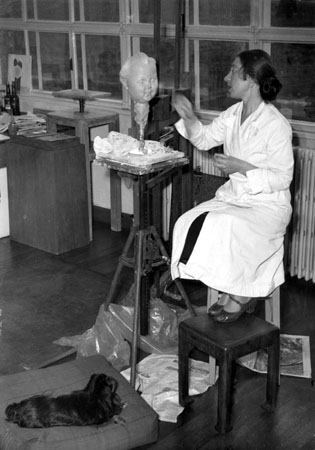
Dora Gordine, one of the most prominent sculptors of the XX century, was born 'Dora Gordin' on 8 June 1895 in Liepaja (Latvia) (Libau/Libava) to Morduch (Mark) Gordin and Emma Ester Schepshelevitch. Dora gave this birth date to the Estonian police in August 1928 and the birthplace to organisers of the Salon des Tuileries in Paris in 1926. She varied her birth date, when she was interviewed by British and French journalists during the 1920's, from 1902 to 1906.
Both parents gave their religion as Jewish. Mark/Morduch Gordin seems to have thought of himself as Russian while Dora's elder brother, Leopold, referred to his mother as being Latvian. The father may have been an engineer or prosperous businessman involved in the transformation of Libau's port into the major base for the Russian Baltic Fleet at the turn of the 20th century. In the late 1920's Dora often claimed he had been a St. Petersburg-based architect who moved comfortably in cultivated artistic circles. In later life Dora claimed that her father's family were originally Scottish; one ancestor was a Scottish architect who had worked for Catherine the Great no less. By the 1940's her father had been transformed into a Tsarist General and his mother a Princess! She would never let the truth interfere with creating a favourable impression.
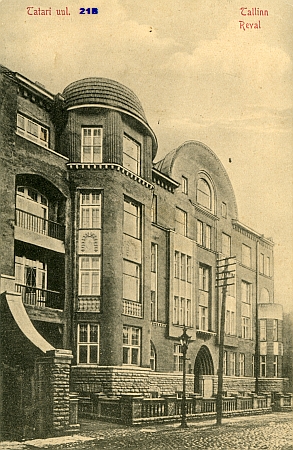 Dora had two elder brothers: Nikolai (born 1888) and Leopold (born 1893) and one elder sister Anna (born 1892). It looks like Dora's
father moved to Tallinn (then Revel) around 1911. Records kept by Edinburgh University indicate that from 1912 Leopold considered Revel to be home. By then the Gordin family were living in a prestigious art nouveau building at 21B Tatari street designed by the important Estonian architect Karl Burman for prominent local property developer, journalist and Estonian nationalist August Busch (1868-1922).
Dora had two elder brothers: Nikolai (born 1888) and Leopold (born 1893) and one elder sister Anna (born 1892). It looks like Dora's
father moved to Tallinn (then Revel) around 1911. Records kept by Edinburgh University indicate that from 1912 Leopold considered Revel to be home. By then the Gordin family were living in a prestigious art nouveau building at 21B Tatari street designed by the important Estonian architect Karl Burman for prominent local property developer, journalist and Estonian nationalist August Busch (1868-1922).
Dora crossed the path of at least three artists associated with the Noor Eesti (Young Estonia) Movement launched in 1905: sculptors Anton Starkopf and Jan Koort and flamboyant painter Ants Laikmaa who ran an art school, c. 1913-1929, in his top floor rooms at 21B Tatari str. What did Dora get up to during the First World War? She would have been 19 in 1914; she later claimed to have spent some time before the War in St. Petersburg, studying music at the Conservatoire. She also claimed to have met Diaghilev and Leon Bakst and made many contacts with members of the Ballets Russes. No evidence has emerged to prove or disprove these claims. She may have received some artistic training in Tallinn during the war. Dora may have also studied at the National School of Applied Arts and Crafts established in Tallinn in 1913. Between 1914 and 1920 a one-year course in sculpture was taught there by Estonian artist Nathalie Mei.
In August 1914 Leopold had just completed the second year of his degree at Edinburgh when Russia went to war with Germany. He promptly returned to Tallinn and joined the Imperial Russian Cavalry (Ingermanland Hussars) as a volunteer. He rose to the rank of non-commissioned officer and was wounded during the Brusilov Offensive of June-August 1916. Shortly before the February Revolution of 1917 he was made an officer candidate, but his training at a school in Tashkent was halted by the Revolution. The school was burnt down and Leopold narrowly escaped with his life. He then began an epic 18 month journey to get back to Tallinn, by train, on horseback and on foot.
In April 1917 Dora was one of 21 exhibitors contributing 238 works to an exhibition organised by the Estonian Art Society and held at the recently built Tallinn Cinema, Viru Street. She exhibited two pieces of sculpture - one of which was the head of a child.
On 27 October 1917 (Old Style) Estonian and Russian Bolsheviks seized power in Tallinn. An Estonian Soviet Executive Committee exercised control with hundreds of nationalists and suspected counter-revolutionaries arrested, private businesses nationalised, privately owned land forcibly confiscated and extensive press censorship introduced. It is likely that it was during this troubled period that Dora's father was threatened by Bolsheviks. Many years later she told Sir Sydney Cockerell, former director of the Fitzwilliam Museum, Cambridge University, that her father had a stroke when 'revolutionaries' told him he and his family would be hanged as 'speculators' and' hoarders' if he did not sign over his property to the Revolution. In other versions of the same story, her father died from the stroke. On the other hand, Tallinn Jewish Burial Society records indicate that Morduch Gordin died in 1915. It would be most unusual to have two Morduch Gordins at the same time in Tallinn.
Towards the end of February 1918, the Tallinn Bolsheviks were overthrown by Estonian Nationalists. However, within a couple of days the city was occupied by the German Army. Dora's whereabouts for this period are unknown, but her mother and elder sister Anna had 'ausweis' passes issued by the German authorities - so they were in Tallinn while the Germans were in charge. Following German defeat on the Western Front, and the Armistice of 11 November 1918, the German Army withdrew from Tallinn which was quickly occupied by Estonian Nationalist forces. Leopold Gordin arrived from Tashkent via Petrograd (he later told British immigration authorities he had spent 6 months in the Russian city avoiding the Cheka), met the family (including Dora) still living at 21B Tatari tän. He promptly joined what he called a local 'City Protection League' which fought the Bolsheviks who attempted to fill the vacuum left by the retreating Germans and chased them from the city. The league was incorporated into the young Estonian Army and sent to fight advancing Red Army troops to the west of Narva.
At the end of June 1919 Leopold Gordin was appointed a Liaison officer and Interpreter serving with the Transport Department of the White Russian 'North-Western' Army and working closely with the British Military Mission in Tallinn. Leopold remained with the Transport Dept. until the end of January 1920 when the White Army had been defeated and disbanded. When he applied for British Citizenship in 1930 Leopold referred briefly to having been helped in this work by his sister Dora. So, there is some evidence she was in Tallinn in 1919. Leopold and Dora also worked for the American Relief Organisation/European Children's Fund in Tallinn, until March 1920 - the Organisation cared for over 80,000 children in Estonia alone.
Early in October 1919 the Gordin family - mother, Leopold, Anna and Dora moved from 21B Tatari tän. to 4 Narva Mnt. The family occupied one flat and Dora turned another within the building into a studio for her sculpture. She was actively exhibiting in Tallinn: in 1920 and 1921 she took part in the shows held by the 'ARS' Group which was founded initially by a group of Russian artists trapped in Estonia by the Russian Revolution and then the Civil War. Some of its first members, however, included Estonians and Baltic Germans.
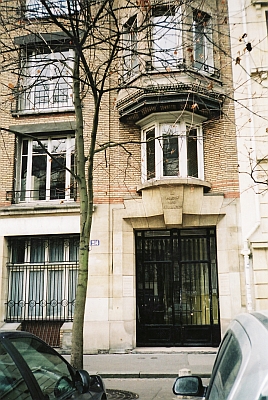 Around this time Dora was also teaching sculpture at the National School of Arts and Crafts founded in 1921 by Jan Koort. One of her pupils was a Jewish sculptor called Jeguda Leiba who, in 1922, moved to continue his studies in Berlin. Records held by Tallinn Municipality indicate that, shortly after December 1921, Dora, her mother and elder sister Anna successfully applied to become Estonian citizens.
Around this time Dora was also teaching sculpture at the National School of Arts and Crafts founded in 1921 by Jan Koort. One of her pupils was a Jewish sculptor called Jeguda Leiba who, in 1922, moved to continue his studies in Berlin. Records held by Tallinn Municipality indicate that, shortly after December 1921, Dora, her mother and elder sister Anna successfully applied to become Estonian citizens.
In the autumn of 1924 Dora moved to Paris. She found rooms, with studio space, at the Maison des Etudiants at no 214 Boulevard Raspail - just a few minutes walk from the Carrefour Vavin and famous cafes such as the Dome and the Rotonde at the heart of Montparnasse. Dora kept a room and studio in the Maison until she left Paris in the winter of 1929. In the spring of 1925 Dora was employed as a part-time painter in the British Pavilion of the 'Exposition des Arts Decoratifs et Industriels Modernes' exhibition in Paris. In May 1925 Dora exhibited a Bronze (503) at the Salon Nationale (closed at the end of August 1925). She gave her birthplace as 'Libau', her nationality as 'Esthoniene' and, for the first time, her surname as 'Gordine' and not 'Gordin.' She added the vowel, apparently, because she thought it made her sound more 'exotic', more 'Russian'.
Janet Vaughan wrote in her memoirs: 'One evening [in 1926] David [her boyfriend] asked me if somehow I could put up [at Taviton Street] a Russian girl, Dora Gordine, who had brought over [to London] a party of school children for him from Paris and whom he had found stranded at Victoria Station ... She [Dora] was then a very young, unknown, Russian refugee in Paris, working almost alone and untaught and living on air, as far as one could understand; but she was an exciting person, full of courage and laughter, strangely beautiful, with a great know of hair at the nape of her neck. After that first visit she often brought over [from Paris] parties of school children for my [future] husband and stayed with me both in Taviton Street and at home in the School House at Rugby." Vaughan had the impression Gordine was 'Russian'; Leonard Woolf thought she was 'Swedish' Another of Vaughan's friends to whom she introduced Gordine, the actor Charles Laughton, referred to her as having the hands of a 'Finnish masseuse.'
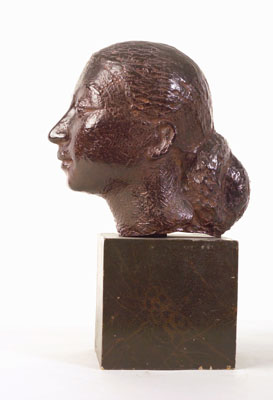
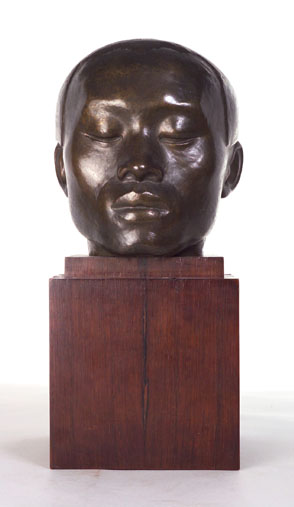 In June 1926 Dora exhibited a bronze Chinese Head... later known as Chinese Philosopher ... Gordine gave her address as 'Maison des Etudiants', 214 Boulevard Raspail and her nationality as 'Esthonienne.' Interestingly enough, she was listed in the catalogue next to the Russian painter Natalia Goncharova. Gordine was the only Estonian exhibitor.
In June 1926 Dora exhibited a bronze Chinese Head... later known as Chinese Philosopher ... Gordine gave her address as 'Maison des Etudiants', 214 Boulevard Raspail and her nationality as 'Esthonienne.' Interestingly enough, she was listed in the catalogue next to the Russian painter Natalia Goncharova. Gordine was the only Estonian exhibitor.
Towards the end of 1927 and throughout 1928 Gordine seems to have travelled with ease between Tallinn, Paris, London and, possibly, Berlin. Towards the end of August 1928 from Tallinn Police Records it is clear she as 'Dora Gordin' officially left the city, and no.4 Narva Mnt, to live full-time in Paris.
How Dora came to have an exhibition at the Leicester Galleries, the high profile London art gallery, is an intriguing tale in itself and reveals her ambition, determination to succeed and talent for influence manipulation. The influential Anglo-Greek art dealer, collector and connoisseur George Eumorfopoulos wrote the introductory note to the catalogue for the Gordine exhibition which opened in October 1928 at the Leicester Galleries in London. The very fact that such an eminent collector was so publically supporting Gordine's work must have contributed to the hugely successful reception given to the 17 bronzes she exhibited in 1928. The critic of the London Evening Standard newspaper, Reginald Wilenski, hailed Dora as a 'Girl Sculptor Genius.' Her bronze heads are most sensitively seen and they are also more like real sculpture than anything I have seen at the Royal Academy". Dora's Leicester Galleries exhibition, by any means of measurement, had been a triumph for her - she had definitely 'arrived' on the British art scene as a sculptural talent whose development was to be watched with anticipation of future achievement.
However, Dora returned to Paris with enough money from the successful exhibition to approach the famous architect Auguste Perret with a request that he esign and build a modernist studio-home for her in the ultra fashionable south-western Parisian district of Boulogne-sur-Seine.
With this degree of favourable publicity it is not surprising that Dora had already come to the attention of German art impresario, collector and gallery owner Alfred Flechtheim. During September and October 1929 she held a solo show of 16 bronzes at the Galerie Flechtheim in Berlin. Just as this point, when her European reputation is assured and she has the most famous French architect of the day building her a dream studio-house in the chicest Parisian suburb, she took a ship to Singapore. After a month at sea, and via the Suez Canal and the Indian Ocean she arrives at the jewel of Britain's Empire in south-east Asia and within a few weeks has found a building roofed with attap palm leaves on land owned by the autocratic Sultan of Johor - the southern-most State on the Malayan Peninsula. This structure she proceeded to turn into a studio. Within a few months she had dined at Government House in Singapore with the British Governor and celebrities such as Noel Coward and Cole Porter - both of whom happened to be passing through the port.
On 18 September 1930, Dora married Dr. George Herbert Garlick in a civil ceremony at Singapore's main registry office. Garlick, some 9 years Dora's senior (he thought he was only six years older than her as she gave her birth date as '1898') was a well-connected member of the British colonial elite: he was then Deputy-Chief Medical Officer for the State of Johor and a close personal friend of the playboy Sultan of Johor, Sir Ibrahim ibn abu Bakr - known to be a 'very wicked old Sultan indeed.'. The wedding was attended by the Sultan's elder sister, his second son, Johor's Deputy Prime Minister; the British Adviser to the Sultan; a representative of the British Governor of Singapore; Sir Roland Braddell and the Director of the island's most prestigious firm of accountants. By marriage Gordine automatically became a British Citizen and renounced her Estonian nationality - British law at the time did not recognise the concept of dual citizenship.
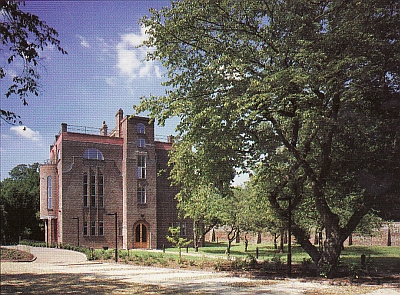
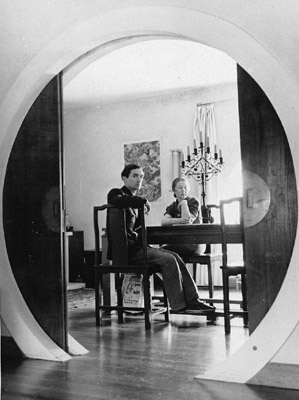 In 1935 Dora abruptly left Dr. Garlick and left Singapore for Paris and then London where she was soon observed having dinner with Richard Hare at the Ritz Hotel. That was in July 1935; by September 1935 Hare had bought a plot of land on Kingston Vale in south-west London. This was the site for Dorich House (DOraRICHard), three floors and sixty-five feet high, which was completed in October 1936. Hare paid just over £2.500 for the house - about £25 million at current UK prices. A month later, in November 1936, Dora and Richard Hare were married at Chelsea Registry Office, London; she was now the Honourable Mrs. Richard Hare.' She gave her age as 1906 - 11 years younger than she really was - and described herself on the wedding certificate as not having been married previously. Her indulgent husband, born 1907, appears to have believed they were about the same age.
In 1935 Dora abruptly left Dr. Garlick and left Singapore for Paris and then London where she was soon observed having dinner with Richard Hare at the Ritz Hotel. That was in July 1935; by September 1935 Hare had bought a plot of land on Kingston Vale in south-west London. This was the site for Dorich House (DOraRICHard), three floors and sixty-five feet high, which was completed in October 1936. Hare paid just over £2.500 for the house - about £25 million at current UK prices. A month later, in November 1936, Dora and Richard Hare were married at Chelsea Registry Office, London; she was now the Honourable Mrs. Richard Hare.' She gave her age as 1906 - 11 years younger than she really was - and described herself on the wedding certificate as not having been married previously. Her indulgent husband, born 1907, appears to have believed they were about the same age.
She had several very successful exhibitions and was proclaimed by some as "very possibly ... the finest woman sculptor in the world". She never seems to have shown any interest in the fate of her brother Nikolai and sister Anna, still living in Tallinn, after the outbreak of the Second World War. Her mother died in 1930. Nikolai was killed by Nazis in 1941 (his name appears in the list of Tallinn men of Jewish nationalty to be killed by 6/10/1941). Anna was probably also killed by Nazis (as were all Jews who remained in Estonia).
Dora Gordine died on 29/12/1991 in Dorich house, which has been now renovated and restored by the Kingston University and became a museum in 2004. A retrospective exhibition of Dora Gordine's works was held in 3 London locations, including the Dorich House, between 11/2/2009 and 22/3/2009. The monograph catalogue "Dora Gordine - sculptor, artist, designer" (Jonathan Black and Brenda Martin with essays by Fran Lloyd and Penny Sparke) was published at the beginning of 2008 by the Dorich House Museum, Kingston University in association with Philip Wilson Publishers, London.
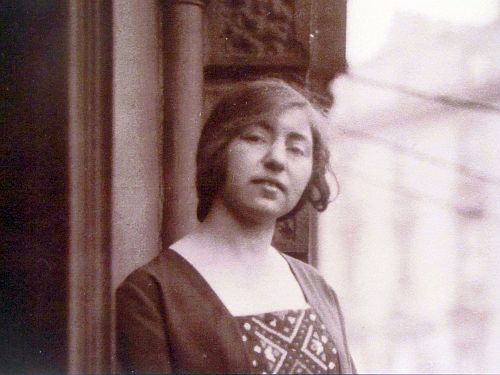
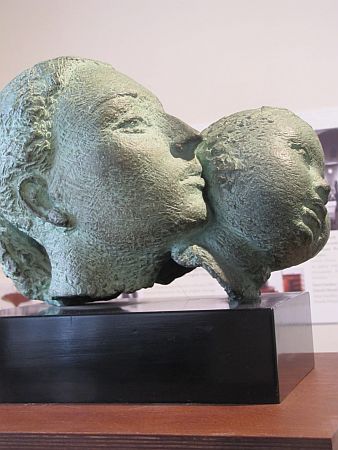
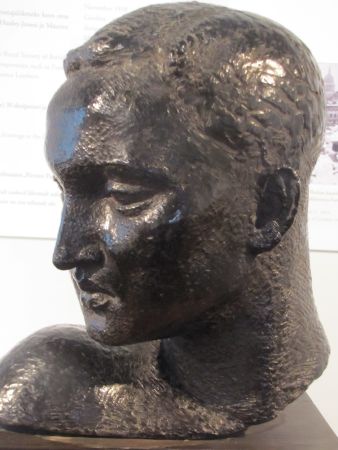
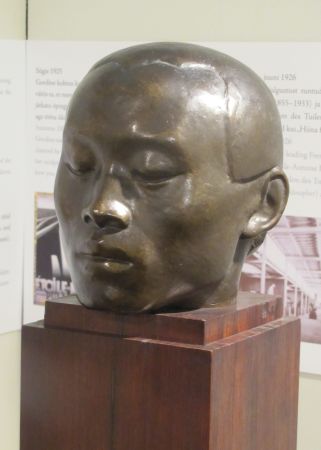
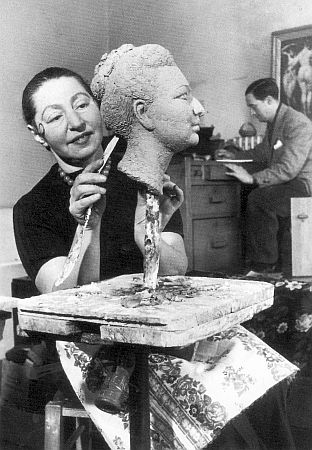
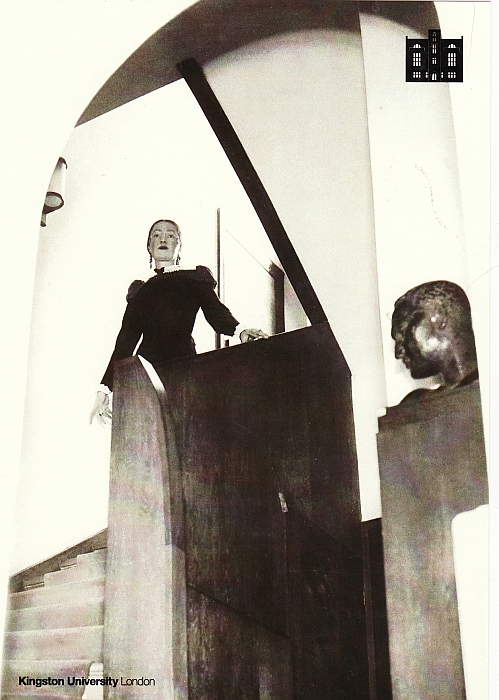
In summer 2012 the exhibition was shown in Tallinn.
